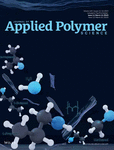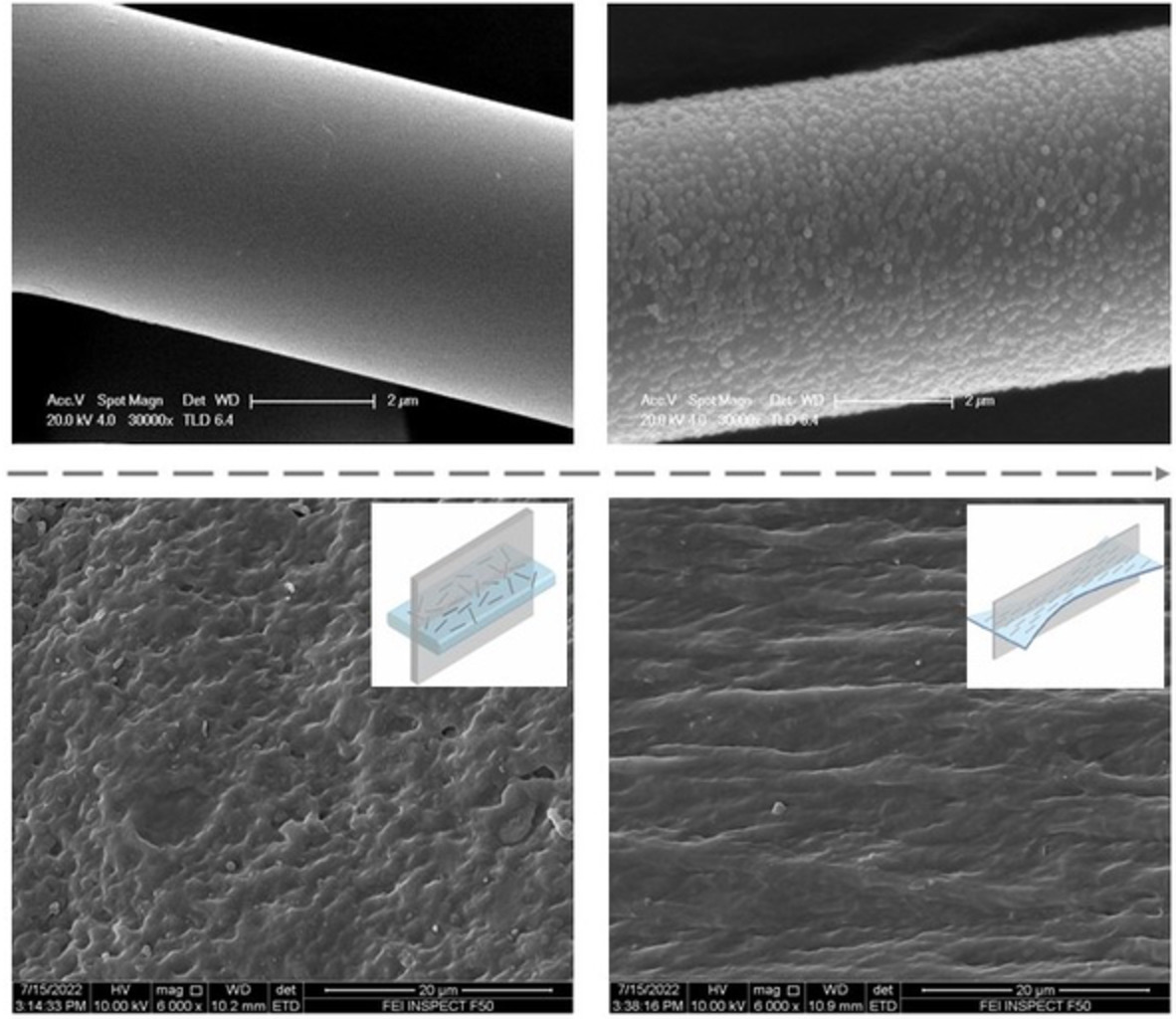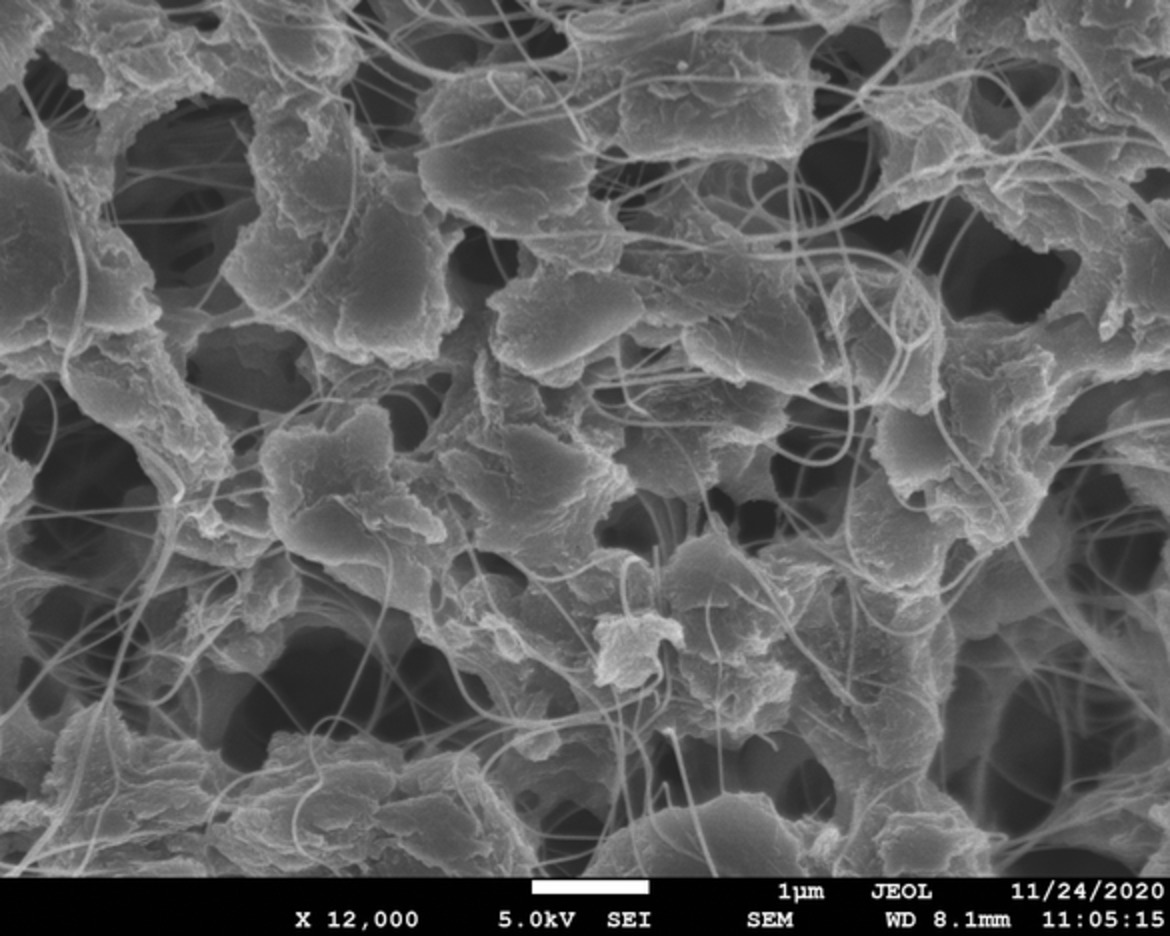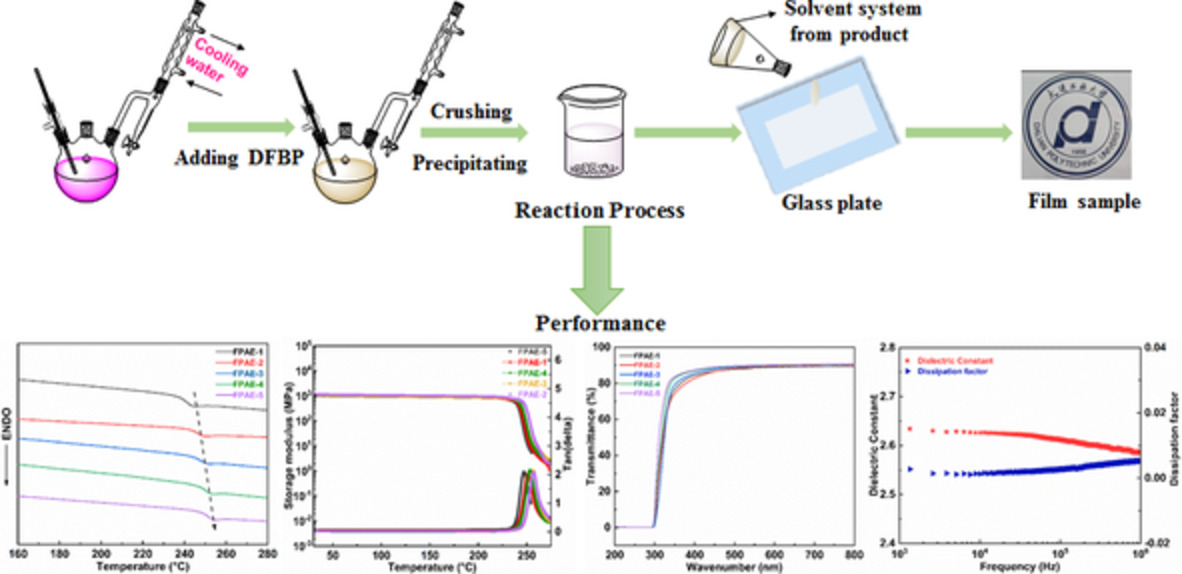Journal list menu
Export Citations
Download PDFs
COVER IMAGE
Cover Image, Volume 140, Issue 11
- First Published: 07 February 2023
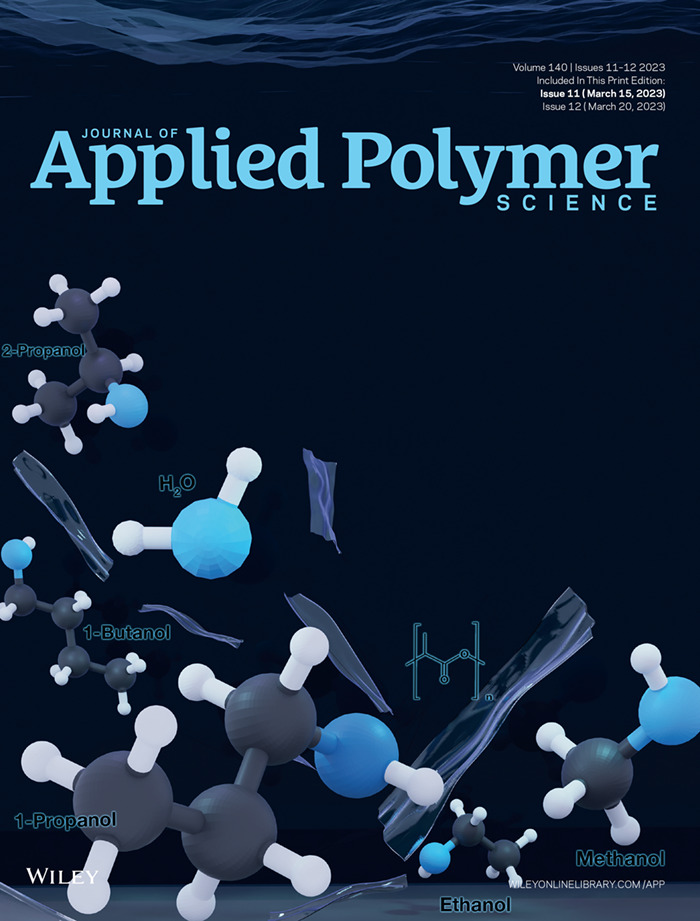
The cover image by Dian Xu shows poly (lactic acid) (PLA) films immersed in different aqueous-alcoholic solutions, including methanol, ethanol, 1-propanol, 2-propanol, and 1-butanol aqueous solution. This work investigated the effect of these alcoholic solutions on PLA's thermal properties by conducting dry and in situ dynamic mechanical analysis. The glass transition temperature (Tg) of PLA film immersed in pure alcohol was lower than the original dry PLA film. The reduction of PLA's Tg is related to the concentration of the aqueous-alcoholic solution in which it was immersed. These findings will assist in developing PLA films in contact with these solutions. DOI: 10.1002/app.53489
ISSUE INFORMATION
RESEARCH ARTICLES
The effect of alcoholic solutions on the thermomechanical properties of immersed poly(lactic acid) films
- First Published: 01 December 2022
Preparation and property analysis of kaolin/melamine cyanurate/aluminum diethylphosphinate/recycled PET composites
- First Published: 18 January 2023
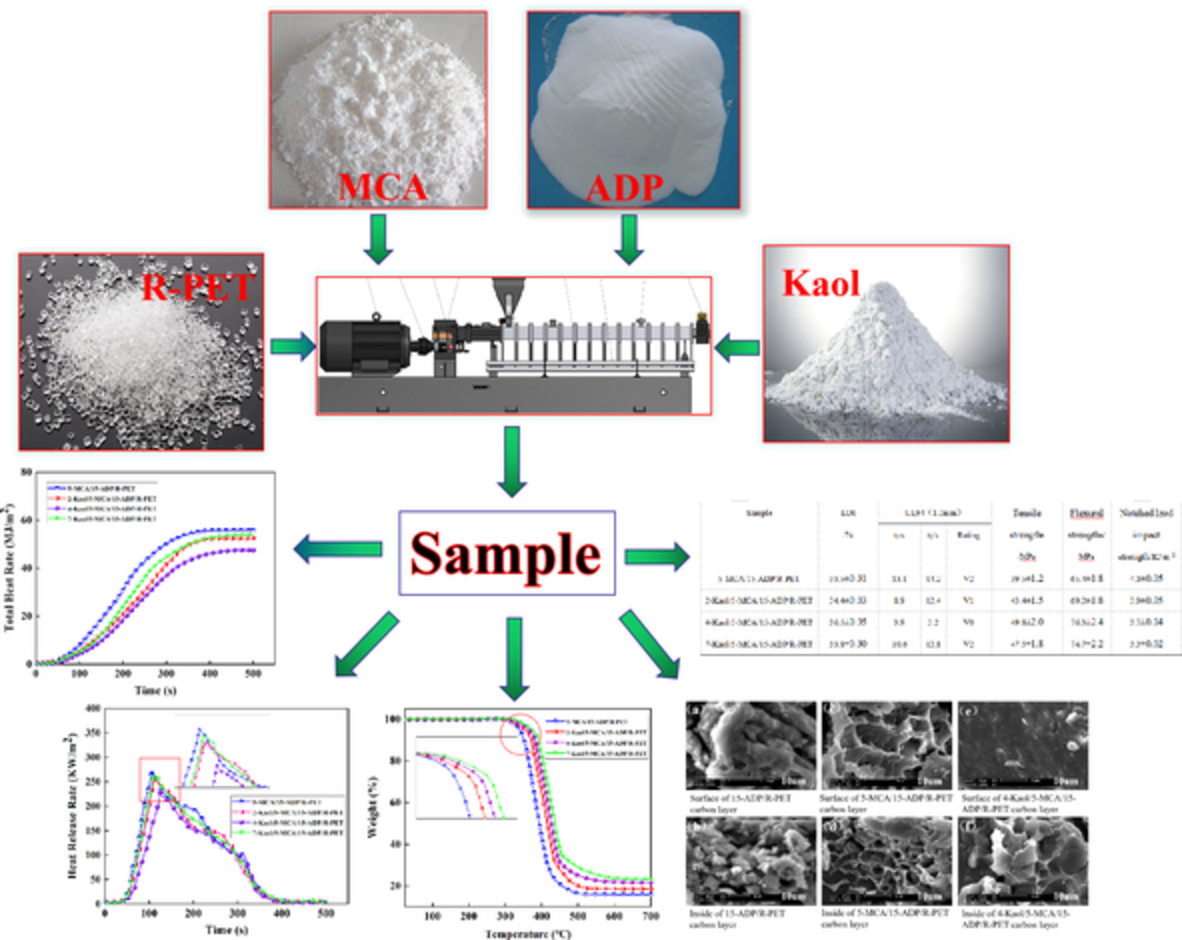
R-PET composites were prepared by melting extrusion. The results showed that Kaol could not only improved the flame retardant and thermal decomposition temperature of MCA/ADP/R-PET composites, but also improved their tensile and flexural strength, the flame retardant of 4-Kaol/5-MCA/15-ADP/R-PET composite reached UL94 1.0 mm V0 with LOI was 36.5%, and the tensile and flexural strength were increased by 26.1% and 16.7% compared with 5-MCA/15-ADP/R-PET, respectively.
Insight of polypropylene synthesis with high performance multidentate internal donor catalyst system
- First Published: 17 January 2023
Stannate and surface functionalized molybdate of zinc for enhanced flame retardancy of epoxy nanocomposites
- First Published: 09 January 2023
Improve the interfacial properties of carbon fiber reinforced epoxy resin composites by maleimide-modified waterborne polyurethane sizing agent
- First Published: 20 January 2023
Robust anisotropic polyvinyl alcohol/glass fiber composites fabricated via hydrogen bonding interactions and freezing–thawing under stretching
- First Published: 05 January 2023
Selective enrichment and extraction of trace dibutyl phthalate by photo-controlled molecularly imprinting polymers based on SiO2 nanoparticles
- First Published: 05 January 2023
D-A-D type functional conducting polymer: Development of its electrochromic properties and laccase biosensor
- First Published: 09 January 2023
Highly conductive polypropylene nanocomposites containing copper nanowire
- First Published: 14 January 2023
Water diffusion kinetics study at different hydrothermal bath temperatures and subsequent durability studies of CNT embedded fibrous polymeric composites: Roles of CNT content, functionalization and in-situ testing temperature
- First Published: 09 January 2023
High-performance nano-TiO2@polyvinylidene fluoride composite separators prepared by electrospinning for safe lithium-ion battery
- First Published: 09 January 2023
Tuning of renewable sponge-like polyurethane physical-chemical and morphological properties using the pullulan as a reactive filler
- First Published: 19 January 2023
Multilayer structural analysis and application of overlap structure for cord–rubber composite
- First Published: 10 January 2023
Effect of titanium dioxide on the structural, thermal, and electrical properties of chlorinated natural rubber/poly (indole) blend nanocomposites for flexible nanoelectronic devices
- First Published: 10 January 2023
Properties and morphology of polylactic acid composites reinforced by orientation aligned calcium carbonate whisker
- First Published: 13 January 2023
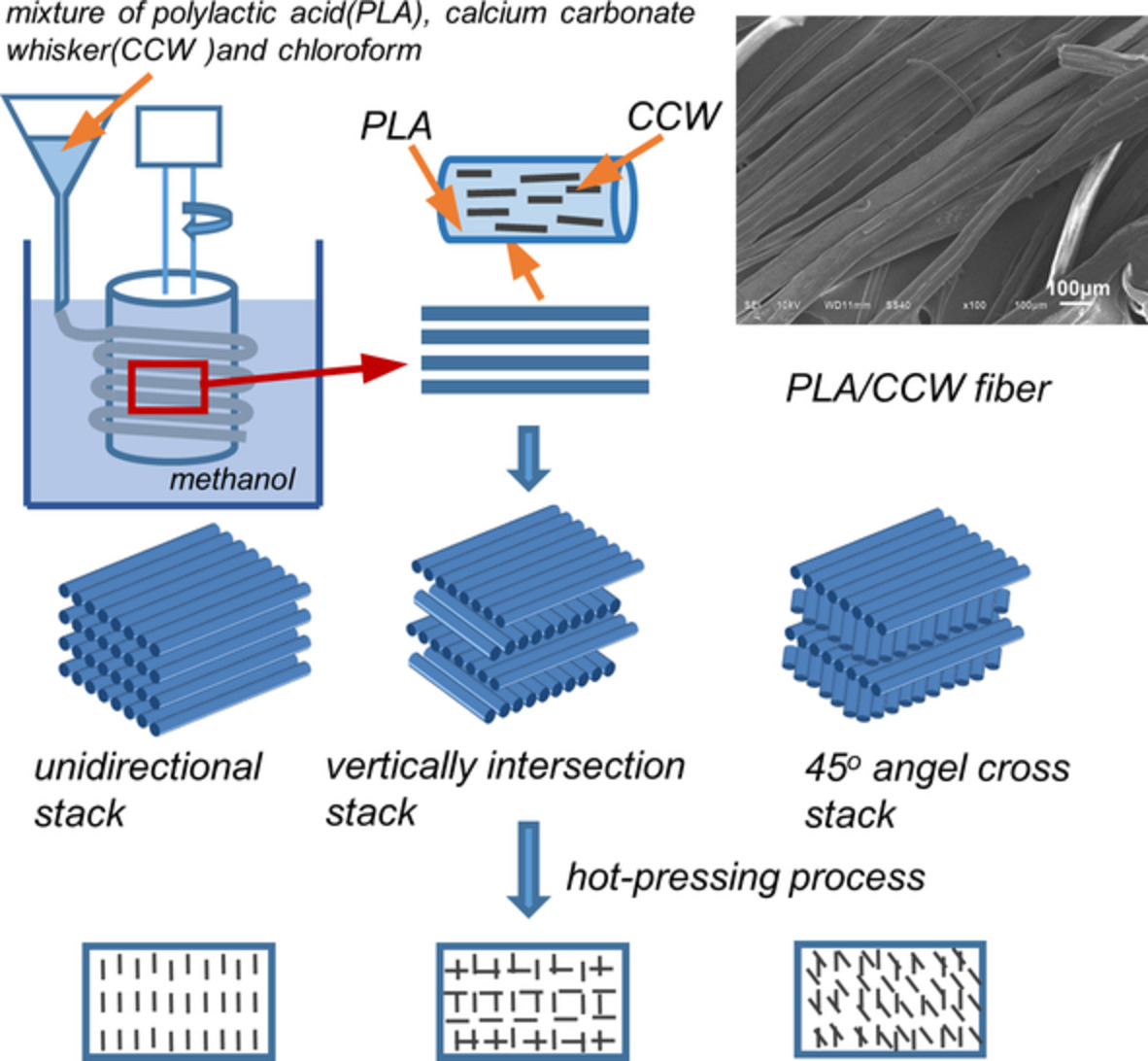
The polylactic acid (PLA)/calcium carbonate whisker (CCW) fibers prepared by solution spinning method was arranged in different stacking sequences and then was hot pressed to obtain the PLA/CCW composite plate. The orientation aligned CCW showed good reinforcement and toughening effect on the PLA matrix.
Synthesis of bio-polyurethanes with isosorbide and propanediol based poly(lactic acid) diol
- First Published: 17 January 2023
Investigating the mechanical properties of epoxy resin composites modified by polyamide and nano-Al2O3
- First Published: 11 January 2023
Preparation and properties research of a bifunctional hydrophobic associative polymer drag reduction agent for slick water
- First Published: 14 January 2023
Quaternary ammonium substituted dextrin-based biocompatible cationic nanoparticles with ultrahigh pH stability for drug delivery
- First Published: 21 January 2023
In situ nanofibrillar composite fiber: A model system for understanding the structural evolution of crosslinked nanofibrils
- First Published: 14 January 2023

The nanofibrillar morphology of PMMA/PAcr composite fiber is controlled by the crosslinking network structure of dispersed phase (crosslinked PAcr microspheres). The PAcr microspheres with inhomogeneous crosslinking network deform into nanofibrils with smaller diameter due to the increased length of network strand, thus increase the toughness of PMMA/PAcr composite fibers significantly.
Synthesis and characterization of amorphous fluorinated polyarylether prepared from phenolphthalein and decafluorobiphenyl
- First Published: 13 January 2023
Blood compatible and noncytotoxic superhydrophobic graphene/titanium dioxide coating with antibacterial and antibiofilm properties
- First Published: 13 January 2023
Fabrication of poly methylacrylate acid hybrid silica core-shell microspheres with redox responsive biodegradability for drug delivery
- First Published: 13 January 2023
Synthesis of cross-linked diazaborine-based polymeric microparticles with antiquorum sensing, anti-swarming, antimicrobial, and antibiofilm properties
- First Published: 17 January 2023
Amino acids grafted-chitosan/glycerophosphate hydrogel for controlled release of berberine hydrochloride
- First Published: 13 January 2023
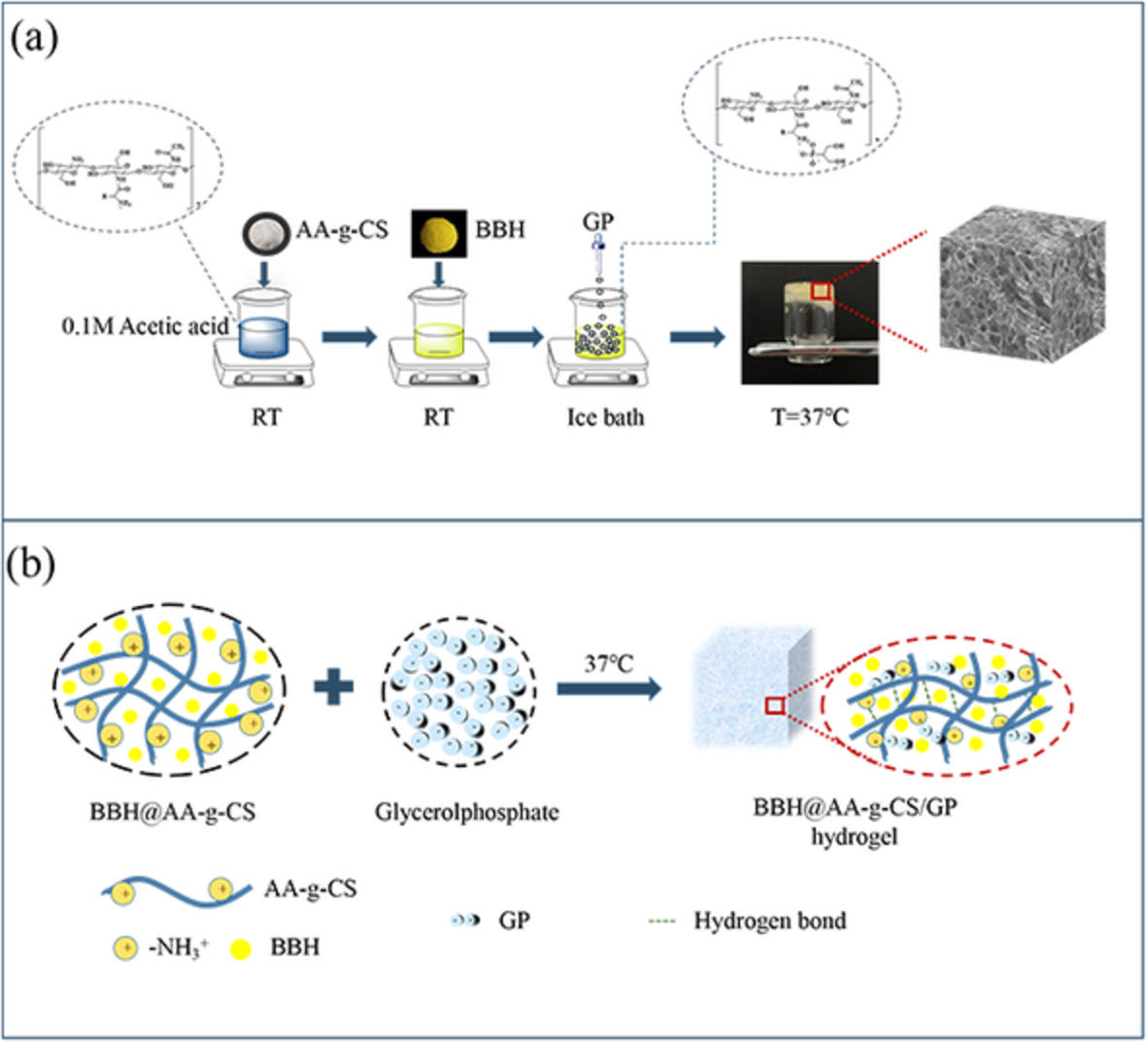
Lys-g-CS, Glu-g-CS, and Gln-g-CS were synthesized by the one-pot method. Lys-g-CS/GP hydrogel, Glu-g-CS/GP hydrogel, and Gln-g-CS/GP hydrogel, temperature-sensitive hydrogels, were successfully prepared by physical cross-linking method. The hydrogels had a 3D mesh structure conducing to load drug. AA-g-CS/GP hydrogels had a better sustained release effect on the model drug.




